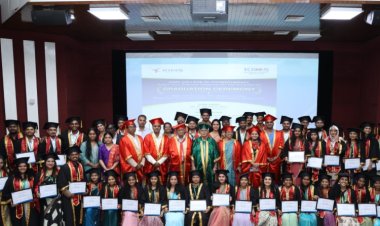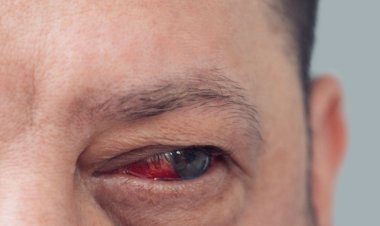Everything you want to know about Cervical Spondylosis

Cervical spondylosis is the name given to the normal age related changes that occur in the spine bones and tissues of the neck region. It is one of the most commonly misused or misunderstood terms amongst general practitioners and the public. It is not a disease, but a degeneration of tissues which can be identified on x-rays and scans. Now, such degenerative changes are associated with stiffness and weak muscles which cause neck pain. Not everybody with spondylosis will have neck pain and every type of neck pain is not spondylosis. Dr. Vivek A N, Consultant, Bone and Joint, Fortis Malar Hospital elaborates in details about this condition.
 1. What are the symptoms?
1. What are the symptoms?
Spondylosis does not cause any symptoms, but spondylosis is associated with stiff neck joints, weak muscles and swelling around nape of neck; symptoms largely depend on these associated factors. The main symptoms include pain, inability to move the neck freely and restriction of neck movements. It can also cause symptoms of headache, giddiness and radiating pain over shoulders and or arms.
2. Elaborate the causes?
It is the normal process of ageing and 85% of people above the age of 65 will have spondylosis. However few associated reasons for early appearance and progression of spondylosis is due to drying of discs present between spine, stiffening of the ligaments around the spin. At times injuries and infection in the region of spine can also lead to early involvement but it remains as a rare cause.
3. Which age group is more susceptible to Cervical spondylosis and why?
The elderly are more vulnerable to have symptoms of spondylosis, since it is a degenerative and age related entity. However commonly we see the younger age groups (between 35-45 years) having symptoms of spondylosis; on retrospect and examination we see a common pattern of ‘bad posture, lack of exercise and weak bones’.
4. How Is Cervical Spondylosis diagnosed?
It is commonly diagnosed on a plain X-ray of the neck. When symptoms are severe and unrelenting, modalities like CT scan and MRI are used rarely.
5. How can you prevent its onset?
Spondylosis cannot be completely prevented but definitely the symptoms arising out of this is preventable and resolvable.
6. What is the best treatment?
Best treatment for spondylosis is following the best practises of maintaining good posture, good exercise regimen, healthy diet and proper use of mobile phones and computers.
7. When is surgery needed for Cervical Spondylosis?
In very rare situations the degenerative changes leads to exuberant new bone formation which may block the way for the nerves, in such cases surgery is performed to widen the canals for the nerves to work better.
8. Can you suggest home remedies to deal with the problem?
Not every episode of neck pain will require a doctor consultation, majority of the neck and low back pains are activity related and self healing. So rest, hot fomentation and use of analgesic gels should be tried to alleviate the symptoms. If pain is relentless or if pain is severe enough that one is unable to to perform day to day activities, then one should consult a doctor.
9. Please leave a takeaway message for the readers?
Spondylosis is not a worrisome contrition or a disease; it’s how the body ages. To avoid problems associated with spondylosis, have an active lifestyle, ensure your office space has ergonomically well designed, maintain good posture at work place, exercise plenty. Avoid excessive use of mobile phones and lessen screen time or at least use these gadgets maintaining the right posture.
Book appointment: Dr. Vivek A N, Consultant, Bone and Joint, Fortis Malar Hospital

 Disclaimer: Welthi.com does not guarantee any specific results as a result of the procedures mentioned here, and the results may vary from person to person.
Disclaimer: Welthi.com does not guarantee any specific results as a result of the procedures mentioned here, and the results may vary from person to person.









